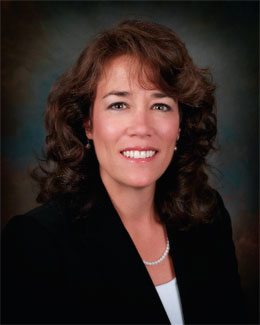|
Marketing
Finally, somebody responds to Mark Twain
WeatherBill actually does more than just talk about the weather
By Michael J. Moody, MBA, ARM
It is clear that the insurance market is in the middle of one of its soft pricing cycles. The latest information from The Council of Insurance Agents & Brokers shows that overall insurance premiums declined an average of 13.5% during the first quarter of 2008. And this follows an average reduction of 12% in the fourth quarter of 2007. Obviously, declines of this magnitude are having a profound effect on brokers and agents nationwide.
Typically, when pricing is this soft in the property and casualty insurance market, coverage becomes more of a commodity, where the only differentiation is cost. As a result, it becomes extremely difficult to distinguish yourself from other competitors. And since many experts are indicating that this market cycle shows no signs of turning around any time soon, this is putting increasing pressure on most agents and brokers as they watch their commissions shrink.
One option
One area that has shown some growth recently and may offer an option is weather risk management. Many agents and brokers are still new to the concept of weather risk management because it has been around for only a dozen years or so. It came into being as a direct result of the deregulation of the energy industry. Once the energy companies found that they could no longer incorporate financial losses into their customers’ next year’s utility rates, they began looking for ways to hedge weather risks. One of the methods developed to deal with those risks was the use of weather derivatives. These capital market products were designed to protect utilities from losses due to Cooling Degree Days and Heating Degree Days. The products were successful, and weather risk management then started to gain broader attention.
As a result, weather risk management has flourished over the past 10 years or so. Many industry observers believe that weather risk management has also become ground zero for the convergence of the insurance industry and the capital markets. However, to date, most of the weather risk management activities have been directed at the large energy companies and public utilities. But there are many other weather risk management applications. According to the Commerce Department about one-third of the U.S. economy, or around $3.8 trillion, is at risk due to weather. The department also notes that an estimated 70% of U.S. businesses are considered “weather sensitive.” Weather can have a significant impact on obvious industry segments such as agriculture, construction, outdoor sports and travel, as well as less obvious segments like transportation, manufacturing, and financial.
Innovative idea
WeatherBill was founded and launched in late 2006 by David Friedberg, CEO, who was a former founding member of Google’s Corporate Development team. Friedberg saw the need for businesses to escape the vagaries of weather-related occurrences. He tells of observing the activities of a bicycle rental shop located near his office on the Embarcadero in San Francisco. “Every time it rained, the shop owner would not open his shop.” Friedberg said, “I knew there must be a better way to handle this.”
So with the help of other ex-Googlers, Friedberg began to develop a new approach to weather risk management. Up to this point in the evolution of weather risk management, involvement in the process was limited to only the largest of accounts. Despite an active weather risk management community, it was limited to active accounts on the Chicago Mercantile Exchange and a handful of large, high-valued contracts that were designed for energy companies and some insurance/reinsurance companies. After reviewing the weather risk market, Friedberg was certain there was a way to help smaller, non-energy customers.
Nuts and bolts
What followed was a new cutting-edge Internet platform called WeatherBill. It provides the only online service that allows businesses to protect revenue and/or control costs associated with the adverse effects from weather. Further, it democratizes weather protection, by giving customers the power to create and implement weather coverage when and where they need it, based on the specific type of “bad weather” protection they need. Friedberg points out that WeatherBill utilizes technology to make traditional forms of weather coverage transparent and accessible. The system allows for maximum flexibility in a wide variety of weather risk situations. Coverage is based on four variables that include location (600 plus weather stations in 7 countries), coverage period (from one hour to several years), payment triggers (rain, drought, heat, cold, and snow), and payout amount.
The first thing to note is that this is not traditional insurance, but rather it is a capital market product known as an “over-the-counter” derivative. Although the trade confirmation differs greatly in language from an insurance policy, the intent of the contract produces the same results and bottom-line protection. According to Christine Ingraham, CIC, director of sales, “WeatherBill has created a unique opportunity to partner with the agency system.” In fact, the WeatherBill Pro Partner Program was designed for professionals who work or interact with businesses whose financial performance is affected by the weather.
Since weather coverage should be considered an integral part of the risk management process of every commercial account, WeatherBill provides tools that will assist in analyzing the risk properly. Traditional risk management values aligned with technology translates to efficient referral, pricing and issuance, often resulting in reduced cost to both agency and client. First and foremost, according to Ingraham, “There is no underwriting involved.” Ingraham, who has more than 10 years of weather risk underwriting experience at Good Weather Insurance Agency and WKF&C Agency, Inc., points out that the agent only has to enter values for the variables noted above and the pricing is available immediately online. “That’s the beauty of the system,” she says. “You can price and effect coverage instantly.”
Typical agency agreements often impose varying levels of authority as well as premium volume requirements. For example, an agency agreement might retain a “prior submit policy” that requires agent/broker approval from the carrier before releasing quotes. However, Ingraham notes, “We have removed this burdensome element from the transaction,” thus making it easier and less costly to issue contracts on needed protection. As a WeatherBill Pro Partner, agents can introduce an unlimited number of customers/prospects to WeatherBill products. Commissions are paid to agents on all purchases made by their clients. In fact, Ingraham states, the WeatherBill Pro Partner referral relationship is much like having what is known in the insurance industry as “binding authority.” This is one of the major advantages of the WeatherBill system.
However, it’s not just the front end of the process that has been streamlined. Because the WeatherBill product is not insurance, the back end is also greatly simplified as well. In the event of a loss, the agent/broker will find that there is no need for a proof of loss form—or any claims forms for that matter. Rather, if the bad weather event happens, information would be available to confirm this at the agreed-upon data source. Because this validation comes from an independent source such as the National Weather Service, the loss can be paid. And it is paid within three business days of the expiration of the contract. This makes the settlement of loss much smoother than any claims process involved with insurance.
In addition to the simplicity of the system, WeatherBill also provides agents/brokers with a number of sales tools. For example, it provides a variety of custom weather products as well as free online historical data for businesses to determine how they could be affected by the weather. WeatherBill also periodically releases one-of-a-kind research reports that provide valuable analysis into ways weather affects major industry segments. One of the most valuable tools to assist agents in the sales process is a 30-year history of actual loss experience. This one-page summary shows a prospect the actual amount of loss the prospect would have incurred over a 30-year period. This is actual loss data that is based on the information submitted by the prospect. And according to Ingraham, “Sharing this information today is vital in analyzing the basis risk properly. Clients appreciate the facts and statistics; rather than selling a product, we’re helping them buy a product they need. Traditional insurance markets cannot efficiently demonstrate these historical models and perhaps in some cases simply choose not to.” But she says, “It certainly drives the point home to the prospect.”
Conclusion
This is a difficult time for most agents and brokers. Today, for the most part, the property and casualty insurance market is being driven by price. Renewal premiums are routinely being reduced by 10% to 15%, and if there is competition, the reductions may be somewhere in the 25% to 35% range. Obviously, this is a direct hit on commissions. What is needed is a new product for the agent/broker to market—one that is easy to use, has a flexible application and provides a value-added aspect, such as filling gaps in an existing insurance program for a customer or a prospect. Ideally, it should also provide additional revenue to help offset the reduced commission from the current book of business. And in a perfect world, the product would have potential customers of all sizes, in all industries.
WeatherBill may well offer such an opportunity. It is an innovative product that has almost universal applicability to customers facing potential adverse affects from weather. It can fill coverage gaps in risk management programs of prospects that did not realize they could purchase such a product. And because it is so flexible, you do not have to wait for an annual renewal of a property program to approach a prospect. WeatherBill is easy to use, provides the agent or broker “with the pen” and, as Friedberg says, “is completely customizable, so no industry goes unserved.” Obviously, early adopters will gain the maximum advantage from this new, innovative product line. *
For more information:
WeatherBill
Web site: www.weatherbill.com |
|
| |
 |
| |
“That’s the beauty of the system. You can price and effect coverage instantly.”
—Christine Ingraham, CIC
Director of Sales, WeatherBill
|
| |
 |
| |
WeatherBill is easy to use, provides the agent or broker “with the pen” and, “is completely customizable, so no industry goes unserved.”
—David Friedberg
Founder
WeatherBill |
|